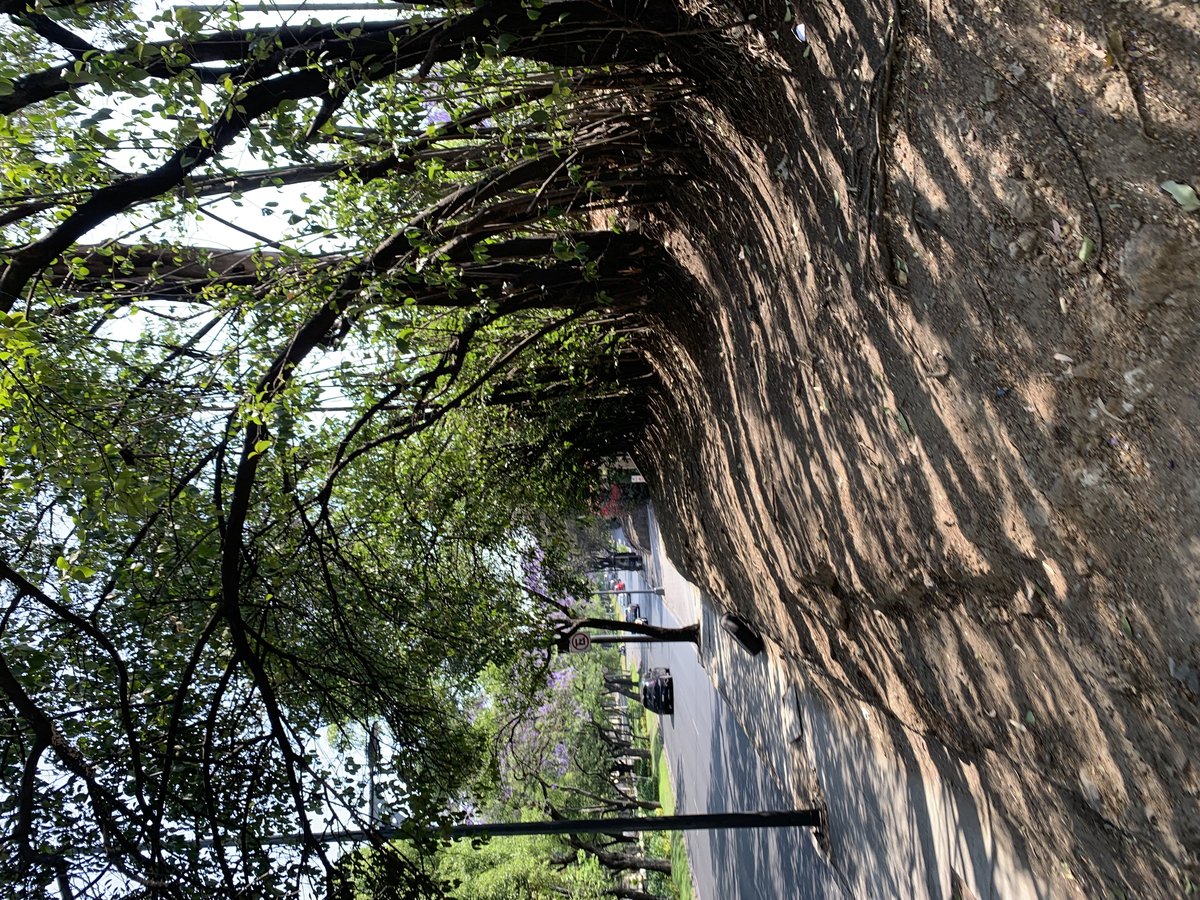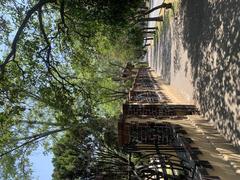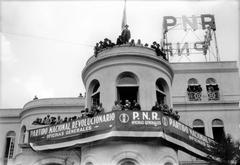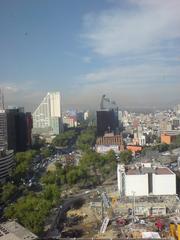
Paseo de la Reforma Visiting Hours, Tickets, and Historical Sites in Mexico City
Date: 14/06/2025
Introduction
Paseo de la Reforma stands as Mexico City’s most iconic boulevard, weaving together centuries of history, monumental architecture, and vibrant urban life. Conceived in the mid-19th century by Emperor Maximilian of Habsburg and inspired by grand European avenues, Reforma has evolved from its imperial beginnings into a hub of culture, finance, and civic engagement. Today, it is not only a vital artery for transportation but also a living museum, home to some of Mexico’s most celebrated monuments, museums, and annual cultural events (Wikipedia; Casa de Chiles).
This comprehensive guide covers everything you need to know about visiting Paseo de la Reforma: historical context, visitor and accessibility information, ticket details for major attractions, travel tips, must-see landmarks, and answers to frequently asked questions.
Table of Contents
- Introduction
- History and Urban Evolution
- Monuments & Landmarks
- Visiting Hours & Ticket Information
- Accessibility & Getting Around
- Cultural Events & Activities
- Neighborhoods & Nearby Attractions
- Dining, Shopping, & Nightlife
- Safety & Practical Tips
- Frequently Asked Questions (FAQ)
- Conclusion
- References
History and Urban Evolution
Imperial Origins and Vision
Paseo de la Reforma traces its origins to the Second Mexican Empire. Emperor Maximilian I envisioned an avenue that would rival the great boulevards of Paris and Vienna, connecting the National Palace to Chapultepec Castle—his imperial residence. Initially named “Paseo de la Emperatriz” in honor of Empress Carlota, the avenue embodied Mexico City’s aspirations for modernization and cosmopolitan flair (Wikipedia; Casa de Chiles).
Republican Transformation and Urban Expansion
Following the collapse of the empire, the boulevard was renamed “Paseo de la Reforma” in honor of the liberal reforms that shaped modern Mexico. Subsequent leaders, including Benito Juárez and Porfirio Díaz, oversaw expansions and beautification projects, introducing tree-lined medians, roundabouts, and an eclectic mix of neoclassical, art nouveau, and art deco architecture (Stanza Hotel; Mexico Historico). Today, Reforma’s skyline is a vibrant tapestry of historic mansions, modern skyscrapers, and public art.
Monuments & Landmarks
Paseo de la Reforma is adorned with some of the most significant monuments in Mexico:
- El Ángel de la Independencia: Erected in 1910 for the centennial of independence, this golden-winged statue is a symbol of national pride and a focal point for celebrations and protests. Its base serves as a mausoleum for independence heroes (Mexico News Daily).
- Monumento a la Revolución: A striking art deco structure serving as both a mausoleum and observation deck, it commemorates the Mexican Revolution.
- Diana the Huntress Fountain: Installed in the 1940s, this art deco fountain is a beloved city landmark, especially illuminated at night (Mexperience).
- Monumento a Cuauhtémoc: Honoring the last Aztec emperor, this monument features intricate reliefs and indigenous symbolism.
- Contemporary Art Installations: The median and roundabouts host rotating exhibitions, statues, and seasonal displays, making Reforma an ever-changing open-air gallery (Moon Travel Guides).
Visiting Hours & Ticket Information
Paseo de la Reforma
- Access: Open 24/7; no tickets required to stroll, cycle, or explore the avenue and its monuments.
Major Nearby Attractions
-
Museo Nacional de Antropología:
- Hours: Tuesday–Sunday, 9 AM–7 PM; closed Mondays.
- Tickets: ~85 MXN; free on Sundays for Mexican residents (Museo Nacional de Antropología).
-
Chapultepec Castle:
- Hours: Tuesday–Sunday, 9 AM–5 PM; closed Mondays.
- Tickets: ~85 MXN; free on Sundays for Mexican residents.
-
Museo de Arte Moderno:
- Hours: Tuesday–Sunday, 10 AM–6 PM; closed Mondays.
- Tickets: ~70 MXN.
-
Palacio de Bellas Artes:
- Hours: Tuesday–Sunday, 11 AM–5 PM.
- Tickets: ~70 MXN; prices vary for events (Palacio de Bellas Artes).
-
Monumento a la Revolución Observation Deck:
- Hours: Daily, 10 AM–6 PM.
- Tickets: ~65 MXN; guided tours available on weekends.
Check official sites for updates, especially during holidays or special events.
Accessibility & Getting Around
- Public Transport: Served by Metro lines 1 and 7, Metrobus, and numerous bus routes. Key stations: Hidalgo, Auditorio, and Chapultepec.
- Pedestrian-Friendly: Wide sidewalks, ramps, and crosswalks ensure accessibility.
- Cycling: Dedicated bike lanes and the “Muévete en Bici” (Sunday Ciclovía) program make Reforma ideal for cyclists (CDMX Mobility).
- Wheelchair Access: Most major sites and sidewalks are wheelchair-accessible; some older buildings and parks may have limited access.
Cultural Events & Activities
- Sunday Ciclovía: Every Sunday, 8 AM–2 PM, Reforma closes to vehicles for walking, cycling, and family activities.
- Annual Parades & Festivals:
- Independence Day Parade (September 16)
- LGBTQ+ Pride March (June)
- Day of the Dead Parade (late October/early November) (Mexico Travel Blog)
- Public Art Exhibitions: Frequent installations and seasonal flower displays enliven the avenue.
- Noche de Museos: Museums along Reforma open late with special programming (Museos CDMX).
Neighborhoods & Nearby Attractions
- Zona Rosa: Known for nightlife, LGBTQIA+ scene, and street art (Mexico City Government).
- Juárez: Trendy with boutique hotels and galleries.
- Polanco: Upscale shopping and dining.
- Chapultepec Park: One of the world’s largest urban parks, home to museums, lakes, and the zoo (Chapultepec Park).
- Alameda Central: Historic park adjacent to Palacio de Bellas Artes.
Dining, Shopping, & Nightlife
Reforma offers dining options from street food stands to acclaimed restaurants (such as Pujol, reservations recommended), luxury hotels, and shopping centers. Rooftop bars and cafés provide spectacular nighttime views of illuminated landmarks (Time Out Mexico City).
Safety & Practical Tips
- Safety: Reforma is one of the city’s safer areas with active police presence. Use standard precautions—keep valuables secure, avoid poorly lit areas at night, and use rideshare apps after dark (Our Offbeat Life).
- Best Time to Visit: Early mornings and Sundays for fewer crowds and car-free exploration.
- Weather: June brings afternoon showers; plan for rain and bring sun protection.
- Language: Basic Spanish is helpful; English is spoken in many tourist spots.
- Connectivity: Many venues offer free Wi-Fi; local SIM cards provide reliable access.
Frequently Asked Questions (FAQ)
Q: What are the visiting hours for Paseo de la Reforma?
A: The avenue is open to the public 24/7; nearby museums and monuments have their own schedules.
Q: Are tickets required to visit Paseo de la Reforma?
A: No tickets are needed for the avenue or outdoor monuments. Museums and observation decks require tickets.
Q: How do I get to Paseo de la Reforma?
A: Easily accessible via Metro lines 1 and 7, Metrobus, public buses, and rideshare services.
Q: Is Paseo de la Reforma safe for tourists?
A: Yes, especially during the day and during events like the Sunday Ciclovía. Use standard urban precautions at night.
Q: Are guided tours available?
A: Yes, numerous companies offer walking, biking, and Segway tours.
Q: Is the avenue wheelchair accessible?
A: Most of the avenue and major sites are accessible; some older attractions may have limited access.
Conclusion
Paseo de la Reforma is much more than a boulevard—it is a dynamic chronicle of Mexico City’s evolution, from its imperial beginnings to its present-day role as a center of culture, civic life, and urban renewal. Whether you’re admiring the grandeur of El Ángel de la Independencia, exploring world-class museums, or joining locals during a Sunday Ciclovía, Reforma offers an immersive experience for every visitor.
Plan your visit using this guide, make the most of the avenue’s accessible infrastructure and vibrant events, and don’t forget to check out the Audiala app for interactive maps, guided tours, and real-time updates. Reforma awaits—ready to share its stories and spirit with you.
References
- Wikipedia
- Casa de Chiles
- Stanza Hotel
- Mexico Historico
- Mexperience
- Mexico News Daily
- Britannica
- Mexico City Tourism
- El Universal
- CDMX Mobility
- Our Offbeat Life
- Moon Travel Guides
- Mexico Travel Blog
- Palacio de Bellas Artes
- Museo Nacional de Antropología
- Audiala
- Museos CDMX
- Time Out Mexico City
- Chapultepec Park
- Mexico City Government
For more travel tips, interactive maps, and exclusive content, download the Audiala app and follow us on social media.














































































































































































